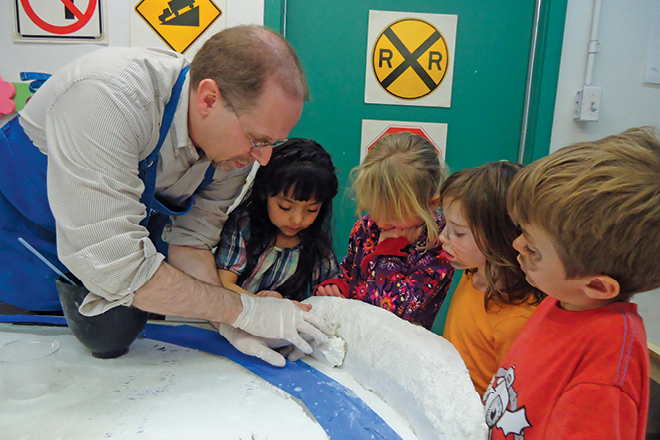Article by Rich Virgin, Rio Grande School
My name is Rich Virgin, and I’m a model railroader.
In all seriousness, I have an abiding passion for this hobby. Like many men my age, my interest in model trains started with a Lionel train set when I was a young child. Most modelers stepped away after discovering girls and cars, only to start again when they hit middle age or maybe after the birth of their first child. I guess I have the bug bad because I never really took a break.
Some now call this the golden age of the hobby. It’s changed so much since I was a child. For the most part, the circle of track on a four-by-eight piece of plywood or an old ping-pong table is long gone. Today’s layouts are designed using computer-aided design and built either on long, narrow shelves or a bench engineered to optimize the viewing and operating experience.

While some people still enjoy watching their trains run around in circles, prototype operations have become a huge part of the hobby. Groups of two to 25 friends will meet to run trains together in a miniature transportation system, moving goods and services across a miniature world. Numerous jobs are involved, and some of the critical positions don’t even require you to run a train. If this sounds like work with rulebooks and paperwork, it is, but I enjoy it, as do many thousands of others.
3D printing is also quickly changing the hobby. A trend is to reproduce real railroads. Using 3D printing, you can recreate exact miniature replicas of engines, freight cars and buildings that you can’t buy at the hobby shop. You can build almost any world that you dream up if you have access to a 3D printer and know programs like SketchUp or Solidworks.
Some modelers spend years conducting research to recreate a historically accurate representation of a bygone era. I admit I really enjoy this part of the hobby. Maybe I’m an Indiana Jones wannabe, but I love going through 75-year-old documents searching for something lost to time.
Prototype operations have become a huge part of the hobby. Groups of two to 25 friends will meet to run trains together in a miniature transportation system, moving goods and services across a miniature world.
So many of these activities interest me, but now, in the short term, I limit my time mostly to building small layouts and introducing children to the hobby.
Five years ago, I built a small train layout in our four-to-five year old preschool classroom. I was skeptical at first; I thought the children were too young, but the teacher insisted I try. So twice a week for about six weeks I worked with small groups for about 10 to 15 minutes at a time. I would work on the layout at night doing the woodworking, electrical and track laying, and then bring it back to school for the children to make mountains and other landforms, build trees and little buildings, and put down grass and bushes. They even made fish for the stream. I learned that when working with very young children, the goal has to be about the process and not the product. That was hard for me the first few days.

More recently I’ve been working with a children’s train club in Albuquerque. Its 15 members range in age from six to 16. Once a month, several adult model railroaders, all members of the National Model Railroad Association, work with small groups and introduce them to every aspect of building a model railroad. The association provides the funding, which, business officers will appreciate, includes liability insurance. Again, the club has taught me to value process over product to keep the kids coming back. We can introduce concepts like scale modeling and new skills as they get older.
As for my current project, I’m depicting the Denver and Rio Grande Railroad between Phippsburg, Colorado, and the Edna coal tipple as it looked September 1966. It’s a four-by-10-foot layout showing five miles at a 1:160 scale. In this world, the sun is shining, the coal mines are busy, and a brand new first-generation Mustang has just flown by my idling diesel train engines. For me, the hobby is like a time machine that lets me go back to a time when life was simpler — at least it was for an 11-year-old.
Learn more about model railroading via the National Model Railroad Association and a historically accurate model of the Yosemite Valley Railroad.
Rich Virgin is director of finance and operations at Rio Grande School in Santa Fe, New Mexico.
Download a PDF of this article.



